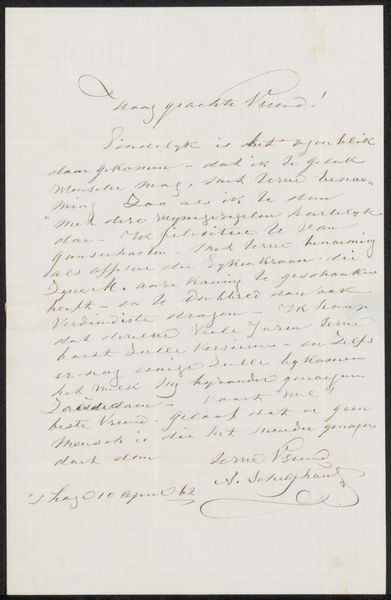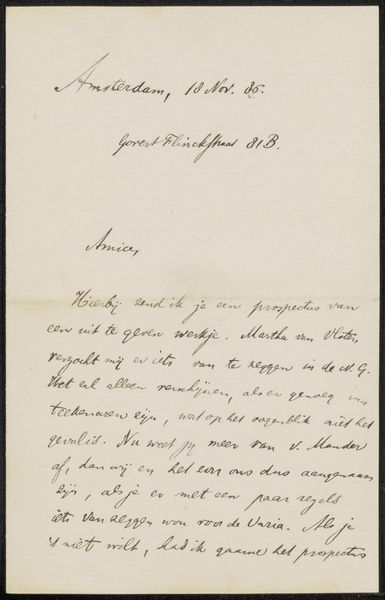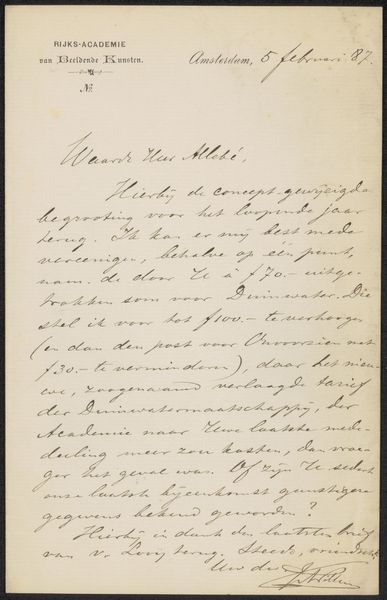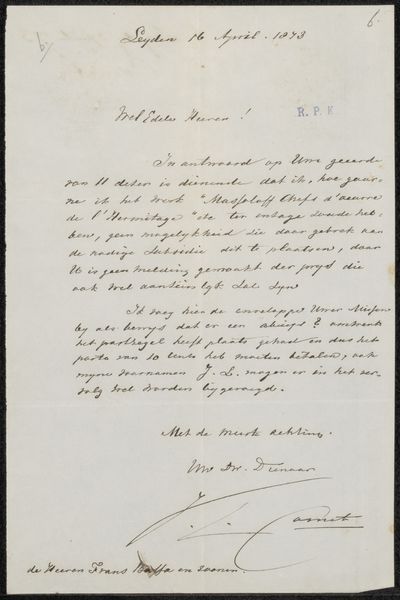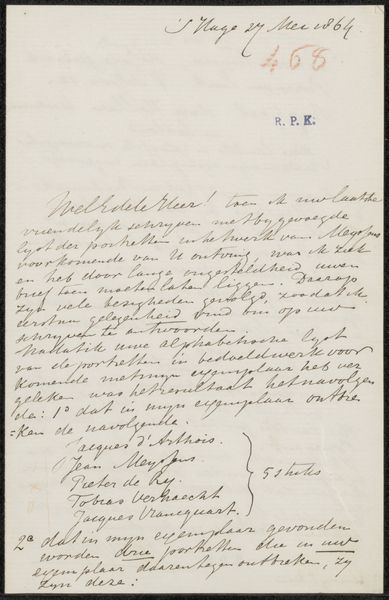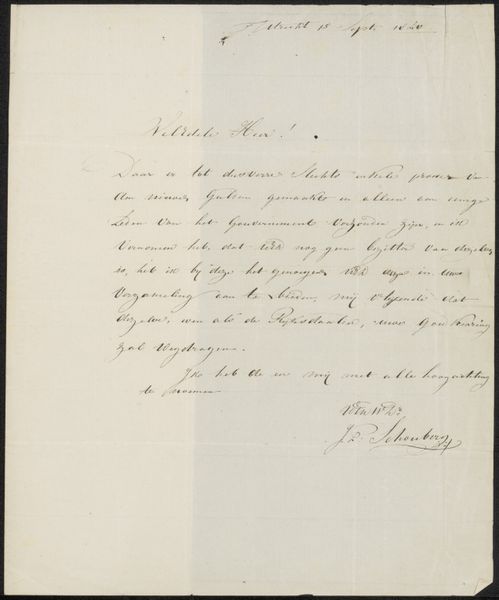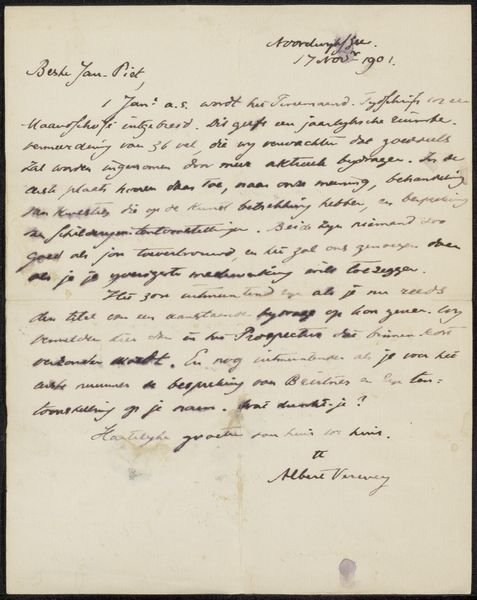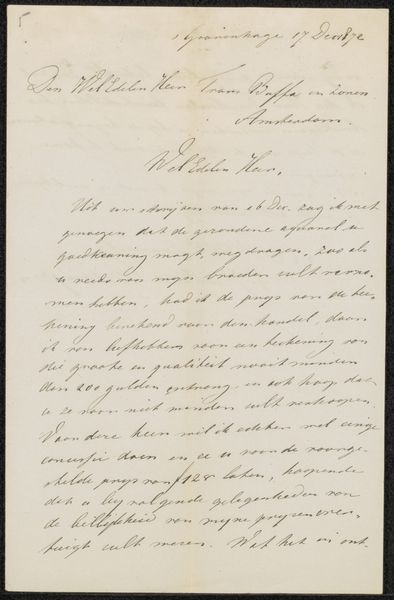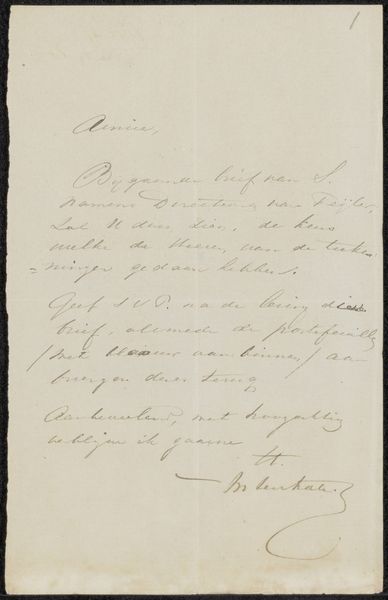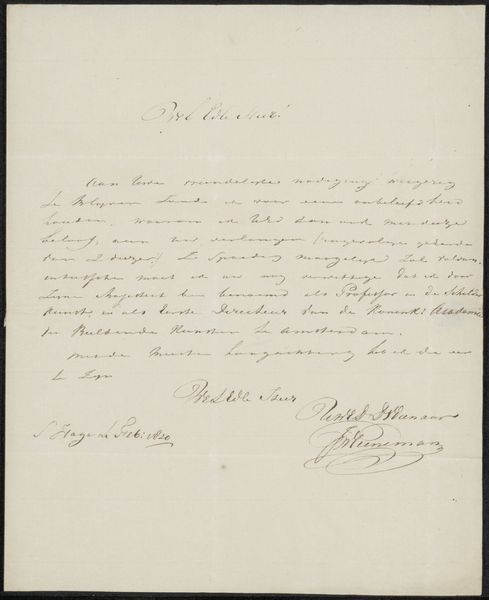
drawing, paper, ink, pen
#
portrait
#
drawing
#
paper
#
ink
#
pen
Copyright: Rijks Museum: Open Domain
Curator: Let’s discuss “Brief aan L. Harderberg,” a work attributed to Alexander Hieronymus (II) Bakhuyzen, possibly dating from between 1853 and 1859. It’s rendered with pen and ink on paper. The marks are so evocative. Editor: Oh, I love this. The overall effect, before even considering the words, is of a hurried, private thought spilling out onto the page. It has a frenetic, almost anxious energy, don't you think? The paper has a clear sense of aging, a definite story it could tell, I reckon. Curator: Absolutely. The support itself contributes significantly to the piece. The type of paper available then, the ink composition – all speak to the social conditions of its production. Were there constraints, financial or otherwise, that led to the choice of these materials? We must ask ourselves that as we regard it. It’s fascinating to consider the labor involved too, from the manufacture of paper and ink to the precise craft of handwriting itself. Editor: It feels incredibly intimate to look at. I love that it’s handwritten; the slant of the letters suggests a particular personality. This wasn't meant to be read by so many, maybe. It gives such immediacy to feelings expressed almost one-hundred-and-seventy years ago, doesn’t it? Curator: Indeed. We can only guess what the words might say—perhaps the price of pigment was rising, perhaps Bakhuyzen struggled for supplies to create his works. In considering these details of production and distribution, the document speaks volumes to its historic circumstance. Editor: The handwriting *is* amazing, almost ornate but grounded with its clear communication intention, almost like an urgent request, if you please. But it’s about what’s written in invisible ink too, what wasn't openly stated in words that brings out the best response, for me. Curator: Certainly. Analyzing “Brief aan L. Harderberg” reminds us that the value of a work extends beyond aesthetics; it lies in its embedded cultural and material narratives. It allows an audit, if you would, of its societal place within production systems, Editor: For me it captures time, emotion, a direct voice—a ghostly touch of another era which echoes now as we ponder it here, right now. That’s magical in itself, to tell you true.
Comments
No comments
Be the first to comment and join the conversation on the ultimate creative platform.
